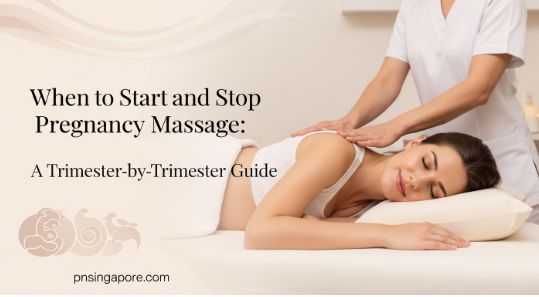When to Start and Stop Pregnancy Massage: A Trimester-by-Trimester Guide

Expecting a baby brings immense joy, but it also comes with its share of physical discomforts that pregnancy massage can help ease. If you’re wondering when to begin or pause prenatal treatments, you’re not alone. Many mothers-to-be search for pregnancy massage packages yet feel uncertain about the right timing.
This trimester-by-trimester guide explains when to start, when to continue, and when to stop pregnancy massage safely and effectively. For those looking for pregnancy massage near me, understanding the best time to begin ensures both comfort and peace of mind.
First Trimester: To Wait or Not to Wait?
Most experts recommend waiting until after week 12 before starting any prenatal massage. During the first trimester, your body is adjusting rapidly, and the risk of miscarriage is highest. For safety, many therapists prefer to wait until this stage passes.
If you’re experiencing severe discomfort early on, consult your healthcare provider before scheduling a massage. What’s safe for one pregnancy may not be suitable for another. Always prioritise medical advice over general guidelines.
Second Trimester: The Sweet Spot for Starting
Weeks 13 to 27 are often considered the ideal time to begin pregnancy massage. By now, your pregnancy is more stable, and common aches — such as back pain, leg cramps, and swelling start to appear.
During this period, pregnancy massage benefits may include:
| Second Trimester Benefits | Frequency Recommendation |
| Reduced back pain | Every 2-4 weeks |
| Improved sleep | As needed |
| Decreased swelling | Bi-weekly |
Sessions every two to four weeks can help relieve tension, improve blood flow, and promote better rest. Choose a therapist experienced in prenatal techniques who understands how to position your body safely for maximum comfort.
Third Trimester: Continuing Care Until Delivery
As your pregnancy progresses into the third trimester (weeks 28–40), regular massage can make a big difference. The extra weight and pressure on joints can cause significant strain, and gentle massage helps to ease discomfort.
Massage at this stage often focuses on:
- Preparing muscles and joints for labour
- Reducing swelling in legs and feet
- Relieving back and hip pain
- Promoting relaxation before delivery
If you’re having a healthy pregnancy, you can typically continue your pregnancy massage packages right up until your due date, with your doctor’s approval.
Red Flags: When to Pause or Stop Pregnancy Massage
While pregnancy massage is generally safe, it should be avoided or stopped immediately if you experience:
- High blood pressure or preeclampsia
- Unexplained abdominal pain
- Vaginal bleeding or spotting
- Severe headaches
- Fever, illness, or dizziness
Always inform your therapist about any changes in your health or symptoms. A trained prenatal therapist will know when to adjust their techniques or recommend pausing treatment.
Finding the Right Pregnancy Massage Near You
When searching for pregnancy massage near me, choose a therapist certified in prenatal massage. They should have specialised training in pregnancy anatomy and understand which techniques, positions, and pressure points are safe for each trimester.
Before booking, ask about their experience with pregnant clients and the type of equipment they use such as adjustable tables or pregnancy bolsters designed for comfort. If you’re in Singapore, many reputable providers offer pregnancy massage packages tailored to each stage of pregnancy.
Frequently Asked Questions
Can I get a massage during my first trimester?
While some women do receive massages during their first trimester, most experts recommend waiting until after week 12. Always consult with your healthcare provider before beginning any pregnancy massage treatments.
How often should I get prenatal massage?
Every 2–4 weeks during the second trimester is usually ideal. As you enter the third trimester, weekly or bi-weekly sessions can offer additional relief.
Are there areas that should be avoided during pregnancy massage?
Yes. Therapists avoid certain pressure points, especially around the ankles and wrists, and never perform deep abdominal massage.
What are the signs that I should stop getting massages?
If you experience any concerning symptoms such as bleeding, severe headaches, dizziness, or abdominal pain, stop massage immediately and contact your healthcare provider. These could indicate complications that require medical attention.
How do I find quality pregnancy massage near me?
Look for therapists with specific prenatal certifications and positive reviews from pregnant clients. Ask about their training, experience, and the equipment they use to ensure a safe and comfortable experience.
Making the Most of Your Pregnancy Massage Journey
Pregnancy massage can be a wonderful addition to your prenatal care when done at the right time. Starting in the second trimester and continuing through the third allows you to enjoy maximum benefits while ensuring your safety and comfort.
Listen to your body and maintain open communication with both your healthcare provider and therapist. With the right approach, pregnancy massage can make your journey to motherhood more relaxed, balanced, and enjoyable.






